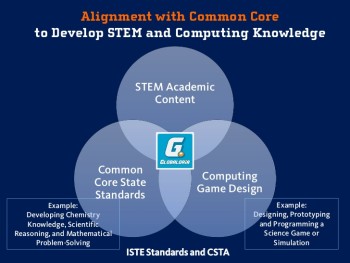Transforming Education Beyond Common Core: Games for Muslim Appreciation, Emotional Intelligence, Diversity and Masterbation
 Gaming holds huge money-making potential for crony capitalists as they seek to capture an $8 billion-textbook publishing industry and transform all textbooks into video game format. For the U.S. Department of Education and progressive educators gaming promises to end “achievement gaps” and to transform students into social change agents.
Gaming holds huge money-making potential for crony capitalists as they seek to capture an $8 billion-textbook publishing industry and transform all textbooks into video game format. For the U.S. Department of Education and progressive educators gaming promises to end “achievement gaps” and to transform students into social change agents.
Games of challenge involving fighting, racing, or sports once offered young males a release valve to hours of stultifying political correctness and feminine modes of teaching in schools. Now educational games will impose politically correct lessons. As the Games for Change event revealed, game developers, with financial support from the Department of Education, are producing games that provide lessons on Muslim cultural appreciation, bullying, slavery, Native American culture–and masturbation.
Such politically correct games are being promoted by politically connected people, such as the “powerhouse couple” of New York Times columnist Nicholas Kristof and Sheryl WuDunn (as they were introduced). They produced the celebrity-studded PBS documentary (and accompanying game), Half the Sky, about women who hold up “half the sky” globally. Kristof claimed that such entertainment can change behavior by closing the “empathy gap,” which is at the root of racial and gender biases.
The couple praised the Department of Education’s early childhood education efforts. Kristof explained that this redirection to the “zero to five” age range came because Common Core is “toxic” and has polarized education reform. He noted that Obama’s early education initiative was the only one applauded by House Speaker John Boehner at the State of the Union. Kristof repeated his call for early education in his column the next day, writing, “Education inequity is America’s original sin.”
Ken Weber, Executive Director of Zinga.org and a board member of Games for Change, then introduced Saudi Arabian prince, “HH Prince Fahad Al-Saud,” a technology entrepreneur. Weber noted that it was not often that he got to introduce a prince, whom he referred to repeatedly as “His Highness.”
The Stanford-educated prince, who spoke without an accent and was dressed like a hip-hop mogul, displayed his familiarity with lessons in academe about the “other,” as he repeated the word in reference to how the West sees the Arab world.
His games, he said, are intended to “build a celebratory narrative about diversity” and to end stereotypes about the Arab world: Osama bin Laden, Aladdin, the “evil and oppressive dictator of the day,” and especially the treatment of women. Claiming that 35 percent of tech entrepreneurs in North Africa and Arabia are women, he took the opportunity to point out gender inequalities in the U.S. While women might experience “movement restrictions” in Saudi Arabia, women in the United States earn less than men, he said. (He did not specify which “movement restrictions,” but presumably they involve driving a car.) According to Wikipedia, the prince has two wives, both princesses.
One of his companies, Na3M Games, part of the Arabic Renaissance, aims to develop the “culturally sensitive individual.” It is operated out of Jordan and Denmark (the latter because it has the largest population of Arabs in the northern European countries).
A 2013 Business Insider article praised Fahad Al-Saud for foregoing the “high life” of a Saudi prince for the life of a “tech entrepreneur and social media evangelist” who had an impact on the Arab Spring uprising. Most of his start-ups have focused on spreading Arabic culture through games, although he also developed a casino game. He was quoted as saying, “In 10 years I want to see countries in the Arab world in their rightful place as global leaders and contributors.” (Later, Rami Ismail, of Vlambeer, also made a pitch about appealing to an Arabic audience.)
Next was the Well Played Series with DePaul professor Doris Rusch. While some of the games her lab has developed, such as understanding mental illness, seem good, others, for developing “social and emotional intelligence” and dealing with bullying, seem too psychologically invasive for children. These games “assess” such things as empathy, social skills, impulse control, and cooperation, and are in line with recent efforts to teach social and emotional intelligence, and the Education Department’s focus on “non-cognitive skills.”
The session with Nordic LARP (Live Action Role Play), which originated in the Nordic countries in the late 1990s, continued the theme, as Bjarke Pedersen promoted emotionally “engaging stories” about racism, alienation, and oppression, and Cecilia Dolk likened their game, Celestra about fighting fascism in Europe, with familiar lessons in police violence and attacks on unions and workers rights. Martin Ericsson of the same group promoted Inside Hamlet as an educational game (in three acts) of the Shakespearean play that has been interpreted in multiple ways, including as a Marxist parable of power. The company is looking for a place in the U.S.
Michael Gallager, President and CEO of The Entertainment Software Association, as previously described, made an appearance again and waxed enthusiastically about the potential of transforming classrooms.
The “Pitch”
The afternoon featured a “pitch event” for prizes. Emcee Jesse Schell of Schell Games presented an image of a game-dominated future, where teachers become “dungeon masters,” tracking their students as they play games. Among the five judges were two representatives from U.S. government agencies: Laura Callanan, Senior Deputy Chairman of the National Endowment for the Arts (since November 2014), and Dr. Marc Ruppel, a senior program officer at the National Endowment for the Humanities, Division of Public Programs. Ruppel, who holds a Ph.D. in Digital Studies, once worked on sponsor Tribeca Film Festival-funded “Robot Heart Stories,” and held positions at the Maryland Institute in Technology for the Humanities and NASA. Callanan had been a senior consultant, specializing in “social innovation,” with McKinsey & Company (former employer of Common Core architect David Coleman).
The other judges were Ron Goldman, co-founder and CEO of Kognito, a technology company serving state and federal agencies, and colleges and universities; Carl Robichaud, Program Officer in International Peace and Security at the Carnegie Corporation, focusing on “strengthening nuclear governance”; and Weber, of Zynga.org, a nonprofit that promotes “the use of social games for social impact.” According to the website, from 2005 to 2011, Weber had been COO of The ONE Campaign, “a global grassroots advocacy and campaigning organization founded by Bono, Bob Geldof, Bobby Shriver and others” that worked “in partnership” with the Gates Foundation (the major funder of Common Core) and international development NGOs for “poverty alleviation and global health issues, particularly in Africa.”
Unsurprisingly, the games pitched advanced the progressive agenda: Thralled is about a runaway slave; Never Alone is about Native culture in Alaska; The Sun Also Rises has nothing to do with Ernest Hemingway or Ecclesiastes, but focuses on the traumas of soldiers in Afghanistan; We Are Chicago “draws from real experiences to give a brief glimpse into the average life of a teenager living in the most dangerous neighborhoods in Chicago”; and Happy Playtime is “a sex-education game which aims to eliminate the stigma attached to female masturbation.”
Never Alone took away most of the prizes, but Happy Playtime, which has been banned by the Apple App Store, won the $10,000 dollar surprise prize from Schell Games. Happy Playtime principal Tina Gong told the judges that she wanted girls ages 10 to 16 to know that women’s bodies “belong to themselves.” She described in sexually explicit terms how points are awarded, and claimed that this game would produce good body image, less unwanted pregnancy, less abuse, and better sex. Her plans include a multi-player format with data-gathering.
This event received virtually no press coverage. Other similar events on university campuses and at conference centers have also gone on with little notice. Game designers are courted with grants from non-profits (aligned with for-profit companies) and federal agencies. All are intertwined.
What they promise is a future of teachers as “Dungeon Masters” tracking students as they navigate games, games whose lessons parents are ignorant of. Profiting are the techno-gurus, progressive educrats, and a political regime seeing the fruition of a plan to completely transform education.
EDITORS NOTE: This column originally appeared on The Selous Foundation for Public Policy Research website.






